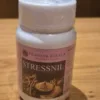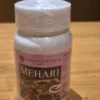Osteoarthritis
Osteoarthritis is the most common form of arthritis, also called degenerative joint disease or disease of joints in which the cartilage and the underlying bones break down over some time.
This means the cartilage cushioning the ends of the bones gradually loses its elasticity and wears away (often called wear-and-tear arthritis) and without the protective cartilage, the bones begin to rub against each other, causing stiffness, inflammation, and loss of movement. It can occur in any of the body’s joints but most often develops in the hands and weight-bearing joints, including the knees, hips, and spine (usually in the neck or lower back).
The condition is prevalent more in older people, aged 60 and above. Women are slightly more prone to develop Osteoarthritis than men. People who have Osteoarthritis will suffer pain from time to time, with the pain said to be at its highest when they wake up in the morning.
Current conventional medical treatments focus on pain reduction and control of inflammation; however, these approaches do not affect the natural course of the disease. side effects of these treatments can be quite significant, and at times life-threatening. Oftentimes, the ultimate treatment for a disabling joint is joint replacement, with the inherent risks and costs that come with surgery.
In Osteoarthritis, the surface layer of cartilage breaks and wears away. This allows bones under the cartilage to rub together, causing pain, swelling, and loss of motion of the joint. Over time, the joint may lose its normal shape. Also, small deposits of bone called Osteophytes or Bone spurs which may grow on the edges of the joint. Bits of bone or cartilage can break off and float inside the joint space. This causes more pain and damage.
Aetiology of Osteoarthritis
As we said above, Osteoarthritis has often been referred to as a “wear and tear” disease, but besides the breakdown of cartilage, osteoarthritis affects the entire joint. It causes changes in the bone and deterioration of the connective tissues that hold the joint together and attach muscle to bone. It also causes inflammation of the joint lining.
A variety of causes—hereditary, developmental, metabolic, and mechanical may initiate processes leading to the loss of cartilage.
There are two distinct types of Osteoarthritis –
- Primary Osteoarthritis- Osteoarthritis does not result from injury or disease, is mostly a result of natural aging of the joint. With aging, the water content of the cartilage increases, and the protein makeup of cartilage degenerates. there is a total loss of the cartilage cushion between the bones of the joints in advanced conditions.
- Secondary osteoarthritis is a form of osteoarthritis that is caused by another disease or condition. Conditions that can lead to secondary osteoarthritis include obesity, repeated trauma or surgery to the joint structures, abnormal joints at birth (congenital abnormalities), gout, diabetes, and other hormone disorders.
Obesity can cause osteoarthritis by increasing the mechanical stress on the joint and therefore on the cartilage.
Sign & Symptoms
Osteoarthritis Vs Rheumatoid Arthritis: the main difference is the cause behind the joint symptoms. Osteoarthritis is caused by mechanical wear and tear on joints. Rheumatoid arthritis is an autoimmune disease in which the body’s immune system attacks the body’s joints. Osteoarthritis symptoms often develop slowly and worsen over time.
- Pain, including knee pain, in the affected joint during or after use, or after a period of inactivity
- Tenderness in the joint.
- Stiffness of the joint is experienced more while the person wakes up early in the morning or following a period of inactivity.
- Grating sensation while moving the joints
- Swelling in some cases
Ayurvedic Concept with Management
In Ayurveda literature, Osteoarthritis occurs due to aggravation of ‘Vata Dosha’ and is known as “Sandhivata”.
Sandhi Vata- ‘Sandhi’ means Joints, ‘Vata’ means Body Humour.
According to Ayurveda, the ‘Vata’ (One of the three bio-regulating principles of the body) is aggravated by various reasons like improper diet, overexertion, injury, exposure to cold & intake of cold items, suppression of natural urges, staying awake at night, stress, depression, etc. Apart from these, aging is a primary cause as ‘Vata’ predominance in the body increases as the age of the person advances towards old age. Individuals with the ‘Vata Prakriti’ (body constitution) are also more prone to the ‘Sandhivata’.
‘Vata’ is ‘Rooksha’ (Dry) in nature. When ‘Vata’ get vitiated in any of the joints, dries up the lubricating Synovial fluid inside the joint capsule, degenerates the joints, and causes the destruction of the cartilage.
‘Sandhivata’ gradually worsens with time, and no cure exists, but ‘Sandhivata’ treatments can prevent the progression of the disease, relieve pain, rejuvenates damaged cartilages, and improves joint lubrication, function & strength.
Pranava Kerala Ayurveda Clinic advocates following the line of treatment-
- ‘Shodhana Chikitsa’ – Strong detoxification Panchakarma procedures should be done. and ‘Kayakalpa therapy’ for rejuvenation
- ‘Shamana Chikitsa’ – done through Oral Medications and External Applications.
- ‘Pathya’ (Diet) – Healthy diet habits & lifestyles are equally important in maintaining joint health.
At Pranava Kerala Ayurveda Clinic, we provide very effective treatment for ‘Sandhivata’. Early diagnosis and treatment are the keys to controlling ‘Sandhivata’ (Osteoarthritis). Panchakarma procedures require around 3 – 4 weeks depending on the joint involved and the patient can expect significant benefits within this period.
Pranava Kerala Ayurveda Clinic’s goal in managing ‘Sandhivata’ includes controlling or relieving pain, maintaining and improving the range of movement and stability of affected joints, and limiting functional impairment.
To find out more about how Ayurveda can help with the above condition, visit Pranava Kerala Ayurveda Clinic or call 0208 907 7902 to book an appointment with an expert Ayurvedic Practitioner.
Medical Advice Disclaimer
DISCLAIMER: THIS WEBSITE DOES NOT PROVIDE MEDICAL ADVICE
The information, including but not limited to, text, graphics, images and other material contained on this website are for informational purposes only. No material on this site is intended to be a substitute for professional medical advice, diagnosis, or treatment. Always seek the advice of your physician or other qualified healthcare providers with any questions you may have regarding a medical condition or treatment and before undertaking a new health care regimen, and never disregard professional medical advice or delay in seeking it because of something you have read on this website.




